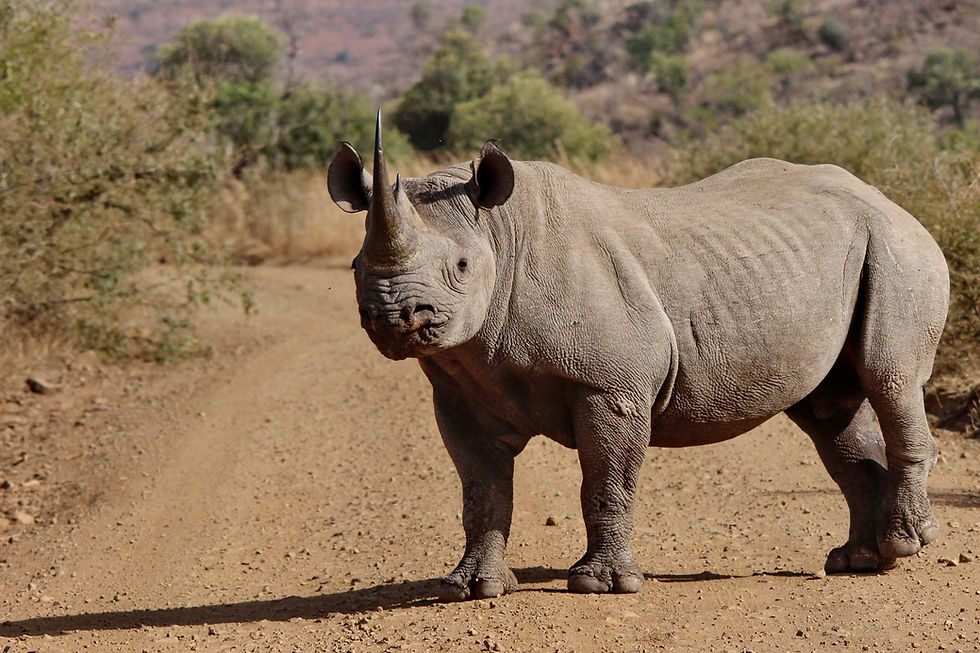
South Africa
Pilanesberg NP
Just about 2 h drive from Pretoria Pilanesberg NP is easily accessible and an excellent choice for a self drive safari. During almost 10 stays in the years 2010 - 2019 we used to camp at Manyane, a campsite offering all amenities and even a restaurant. Our tent and car were usually the smallest and most basic, causing on occasion compassionate looks from neighbors. However over the years we learned to discover the park's excellent nature. Pilanesberg is located in a beautiful natural ring of volcanoes with quite a few dams. Wildlife has largely been reintroduced in the 1980s and many species are thrieving today. During most of our usually a week long stays we managed to see not only the big cats, but also the rare black rhino (also its more common white cousin). Here are some highlights:

Breeding elefant herds like this one - its matriarch had led the group of females and calfs to one of the dams for a drink and bath - are usually easy to find. Initially only young elefants were introduced into the park. In the following years Pilanesberg earned a rather sinister reputation of elefant bulls killing rhinos. Nobody obviously taught these maturing bulls how to properly behave and the problem only disappeared after introduction of several older bulls.

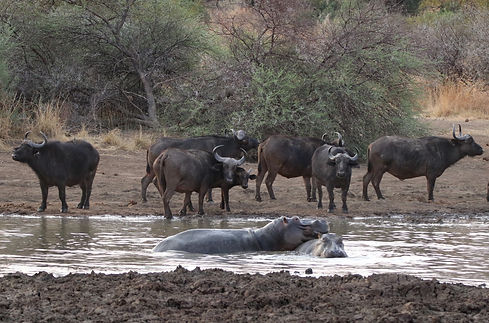
Buffaloes are a rare sight in Pilanesberg, the only herd usually frequenting the inaccessible north-western part of the reserve. One late afternoon we got lucky at Rathlogo dam.
The resident hippos were looking rather annoyed with all the commotion.


Not many animals dare to mess around with a hippo. The long and sharp teeth are formidable weapons.
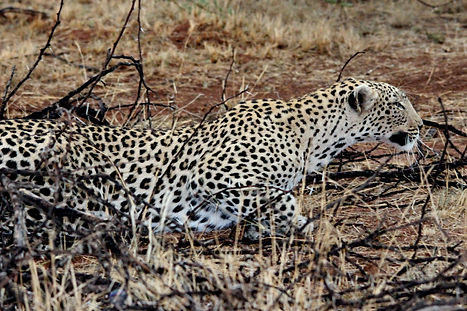
Leopards can be seen regularly, this cat took advantage of a rainy day trying to stalk and surprise an impala.
A leopard walking midday in bright sunlight is rather uncommon.

two cheetah brothers on the move near Kukama Rd

In 2015 a young cheetah, offspring of Pilanesberg's star mother 'Rain', decided to go for a young zebra. When the zebra mother came to help and kicked with her hind legs, the young cat had to let go. Rain was watching from the distance, probably content with the lesson her child received on its long journey becoming a successful predator.
In spite of strong lion competition cheetahs are doing well in Pilanesberg, low hyena numbers probably help.



In August 2017 fires were burning parts of the park. This is usually intended by the rangers aiming at juvenating the bush and eliminating the old grass (moribond), no animal is interested in. Rain's new litter of three had just reached adulthood and the young cats were watching the flames.


They had learnt already that warthogs are fierce fighters, better left in peace.


The young cats still need to learn to hunt efficiently and cope with larger predators, in particular the numerous lions.







lion brothers early morning at Potokwane, heading for Tilodi dam
lions frequently can be seen around Mankwe dam
This lioness was using bushes as cover on Moloto drive while stalking a group of wildebeast. Minutes later other pride members made the kill in high grass.
One of the pride lionesses had three tiny cubs and led them across the road to the kill.
After a very hot day end of October 2019 this big male lion approached Rathlogo dam. A jackal followed, probably hoping for a chance to steal a meal.
The lion had to give way, when a white rhino bull appeared.
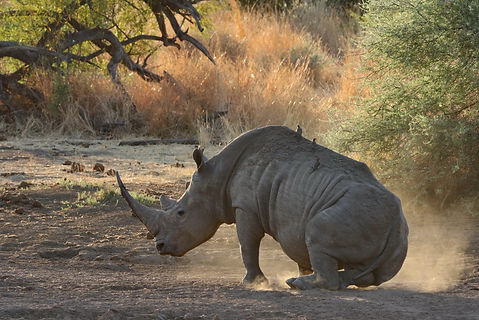
A white rhino mother with calf. Adult rhinos - a white rhino bull can weigh 2000 kg - have normally no natural enemies, but the young are vulnerable and need protection.
The bull decided to relax in the shade after drinking. Pilanesberg is a last stronghold for rhinos with effective antipoaching measures in place. In many other parks mercyless hunting for their horns, which are believed to possess medical value in eastern asia, has wiped out this iconic species or has led to rather desperate measures like dehorning.

Even this fearsome hippo retreated when two rhinos approached. In rare cases a testosterone loaded elefant bull can attack and kill a rhino.


Also a young hippo needs mother's protection, but usually can easily escape into water. Crocodiles rarely dare to attack a hippo, both species can often be seen in close proximity.

.jpg)
In August 2008 - not far from Manyane - a frightingly large lion pride had harassed a black rhino with calf. Unlike its white cousins black rhino calfs follow their mother rather than going ahead, thus possibly compromising mother's protection. Still the lions did not succeed to kill this almost grown up calf, but managed to tear of an ear!
A black rhino drinking a Tilodi dam. There are very few places left in Africa offering a realistic chance to spot one of these rare and endangered creatures. Slightly smaller than white rhinos they are much more agile and nervous. In the old days when these animals were common throughout the continent, walking in thick bush often resulted in a narrow escape onto a tree. Black rhinos - in contrast to purely grazing white rhinos - are browsers and prefer thick bush.
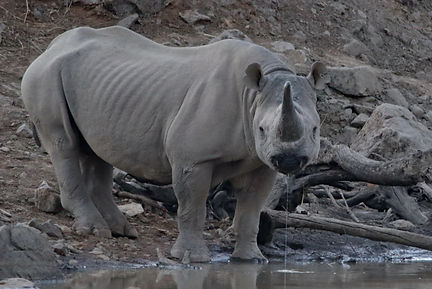
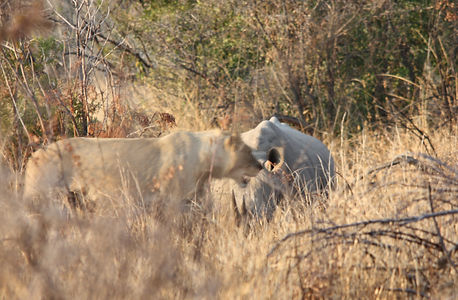
Shy black rhino in a burnt areal near Dithabaneng. Eyesight is poor so these animals heavily rely on their acute senses of smelling and hearing.



Only after patiently waiting for several minutes and keeping perfectly quiet, this black rhino dared to cross Thutlwe Rd.